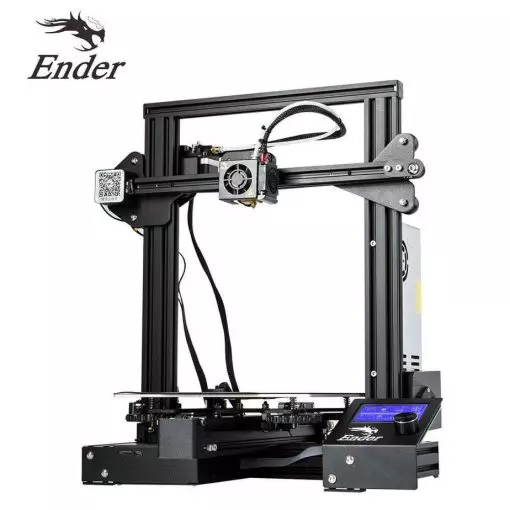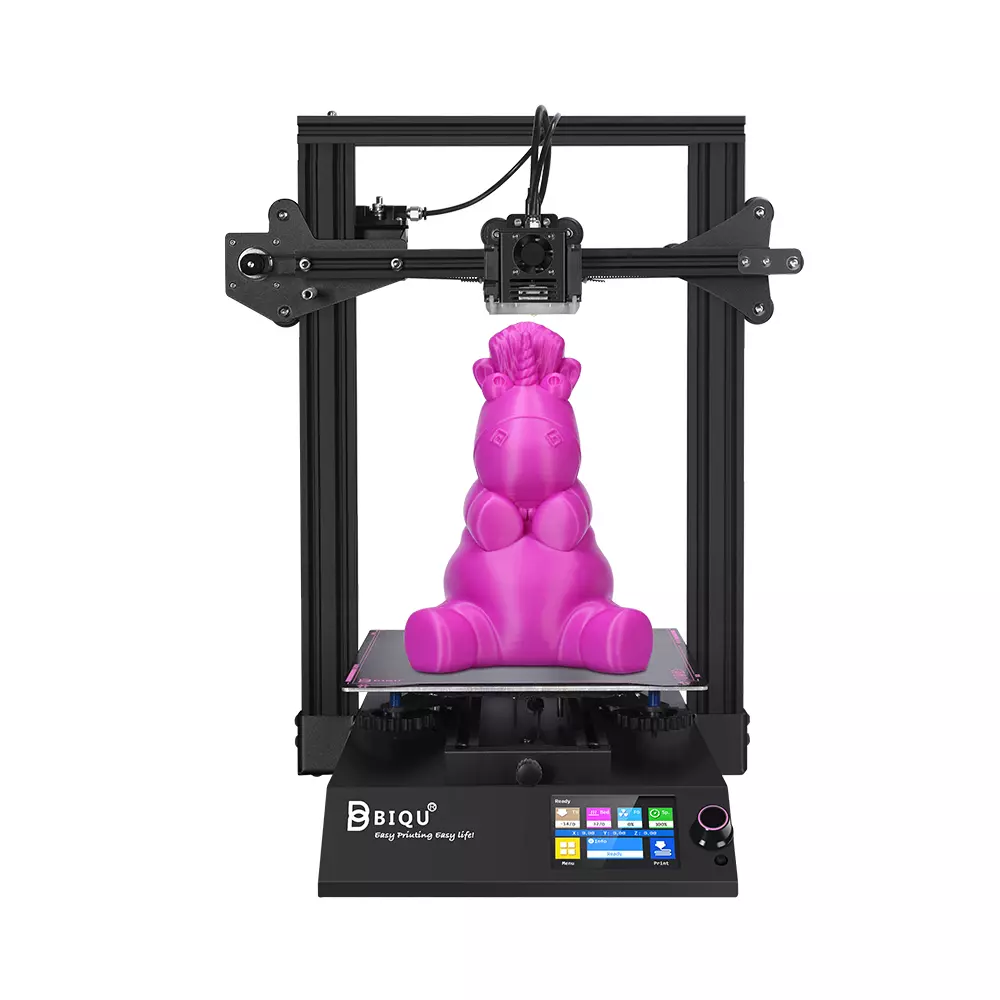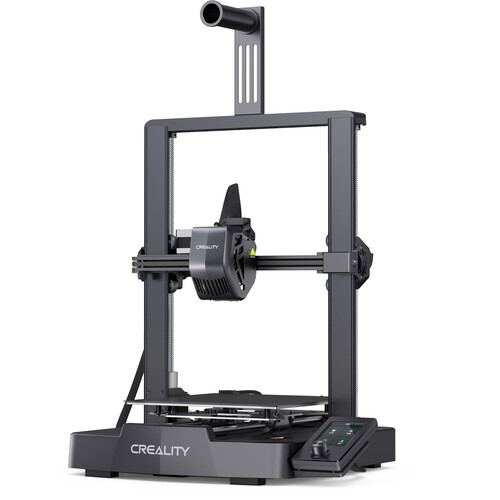Compare Ender 3 vs BIQU B1 vs Ender 3 V3 SE
Comparison between the best 3D printers
Choose the best 3D printer at the best price. The cheapest 3D printers are here.
Buy a 3D printer here with 3D Fila.
 |
 |
 |
|
| Model | Ender 3[BUY Ender 3] |
BIQU B1 |
Ender 3 V3 SE[BUY Ender 3 V3 SE] |
| Printing Material | Filament | Filament | Filament |
| Estimated price | $210,00 | $269,00 | $199,00 |
| Fabricante | Creality 3D | BigTreeTech | Creality |
| Release Year | 2018 | 2020 | 2023 |
| Print Volume [mm] | 220x220x250 | 235x235x270 | 220x220x250 |
| Printer Size [mm] | 440x440x465 | 412x402x492 | 420x366x490 |
| Weight [kg] | 6,62 | 8,00 | 7,34 |
| Power Loss Recovery | NO | YES | NO |
| Enclosed printer | NO | NO | NO |
| Bed Leveling | Manual | Manual | Automatic |
| Filament End Sensor | NO | YES | NO |
| Bed type | Heated | Heated | Heated |
| Power supply system | Bowden | Bowden | Direct Drive |
| Standard nozzle | 0,4 | 0,4 | 0,4 |
| Maximum Nozzle Temperature [°C] | 255 | 250 | 260 |
| Maximum Bed Temperature [°C] | 110 | 100 | 100 |
| Maximum printing speed [mm/s] | 180 | 100 | 250 |
| Filament holder | YES | YES | YES |
| Camera for supervision | NO | NO | NO |
| Recommended filaments | PLA, TPU, ABS, PETG | PLA, TPU, ABS, PETG | PLA, PETG e TPU (95A+) |
| Recommended slicers | Cura, Simplify, Slic3r | Cura, Simplify, Slic3r | Creality Print, Cura 5.0 ou superior, Prusa Slicer, Orca |
| Maximum Resolution [mm] | 0,1 | 0,1 | 0,1 |
| Processor | 8 bits | 32 Bits BTT SKR V 1.4 | 32-bit Silenciosa |
| Display | Mono | Touchscreen TFT 3,5'' | 3,2'' + Knob |
| Power Supply | 24V / 270W | 24V / 360W | 350 W |
| Connectivity | SD / USB | SD / USB | SD |
| Operating systems | Windows, Mac, Linux | Windows, Mac, Linux | Windows, Linux, Macbook |
| Date of registration in the system | 2021-04-13 | 2021-04-14 | 2024-03-06 |
| Release date | 2018 | 2020 | 2023 |
| Extra features | The Ender 3 V1 is a DIY assembly 3D printer, a sales leader since 2017, standing out for its cost-benefit. With a wide printing capacity, it has a CNC machined structure for precision and stability. It offers high-precision prints with low noise, thanks to its innovative V-profile and pulleys. It has a self-adhesive magnetic platform for easy removal of models and excellent adhesion. The Ender 3 heats up quickly, reaching 100°C in 5 minutes, ideal for agile prints. It includes protection against power failures, allowing you to resume printing after interruptions, saving time and material. | The BIQU B1 is an advanced 3D printer with a silent 32-bit BTT SKR V1.4 motherboard and ARM Cortex-M3 CPU, offering DIY interfaces (I2C, SPI, WiFi) and dual Z-axis. Its dual BTT B1 TFT35 V3.0 operating system allows real-time monitoring and multiple printing modes, including G-code visualization effects. It stands out for its BIQU SSS (Super Spring Steel), ensuring easy model adhesion and simplified removal, with the possibility of using it on both sides. It includes a filament sensor, automatically pausing printing in case of filament breakage. The multicolored RGB lights integrated into the hotend allow you to view the printing status even at night. Additional notes include the need for a BIQU-specific Type-C cable and extra interfaces for smart filament sensor and BL Touch. | The Ender 3 V3 SE stands out for its easy assembly, excellent automatic bed leveling, direct extrusion and easy interface, ideal for beginners. Although it uses a coated PC board, it offers robust performance, with print speeds of up to 250mm/s, thanks to a solid construction and linear rods on the Y axis. It lacks Wi-Fi, preferring file transfer via SD card. |
| Support for multiple colors and materials (AMS and CFS) | NO | NO | NO |
Notes * |
|||
| Cost-benefit | 6 / 10 | 7 / 10 | 7 / 10 |
| Hardware | 0.5 / 10 | 2 / 10 | 0.8 / 10 |
| Screen | . | . | . |
| Print volume | 3 / 10 | 3 / 10 | 3 / 10 |
| Performance | 1 / 10 | 1 / 10 | 2 / 10 |
| [BUY Ender 3] | [BUY Ender 3 V3 SE] |
Conclusion |
| In conclusion, when comparing the Ender 3, BIQU B1, and Ender 3 V3 SE, several factors influence their overall value and suitability for different users. The **Ender 3** offers a strong balance of affordability and functionality. Although it requires manual bed leveling and lacks power loss recovery, its reputation for stability and precision, along with a wide range of supported filaments, makes it a popular choice for entry-level users. The **BIQU B1**, while more expensive, features advanced technology with a 32-bit motherboard and automatic filament detection, appealing to users looking for enhanced functionality and reliability. Its dual Z-axis and responsive touchscreen add further appeal, making it a solid option for those willing to invest a bit more for premium features. The **Ender 3 V3 SE** is positioned as the best performer of the three, boasting automatic bed leveling and superior print speeds. It offers an excellent user experience for beginners with its straightforward setup and operations. However, its lack of advanced connectivity options may limit its appeal to more tech-savvy users. In summary, if budget is a primary concern, the Ender 3 remains a strong candidate. For those who prioritize features and performance, the BIQU B1 is an excellent choice. Meanwhile, the Ender 3 V3 SE caters to those seeking modern capabilities and efficiency, making it a worthwhile investment for users looking for a blend of ease and high performance. Ultimately, the best choice will hinge on individual needs, priorities, and budget constraints. |

